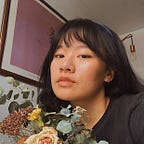DSL: Development Second Language
Languages and communication have always been considered an art form, but development languages are considered a science. This is how I tried to flip the latter.
When I put down my pencil after writing my last French 11 essay, I thought I would never have to take another second language course ever again. I was headed to University, where all the classes I needed to take were all the classes I wanted to take (what a lie). Syntax was never my friend. She was too meticulous, condescending, and bigoted for me to even hold my hand out to her. She was the annoying cousin to Grammar, and the evil counterpart to Artistic Expression.
If you scroll through the list of faculties and studies at any university, English, French, German, and any linguistics fall under the department of Arts. And it made sense too. But Data Structures, and Digital Computation — courses where we learn Python and C++ fall under Computer Sciences. This also makes sense for obvious reasons, but sometimes we fail to see their similarities too.
Language is a tool, communication is an art, and its usage is a science.
In my first term, we took a programming course that taught us about arrays, strings, functions, and classes in C++. We sat in a classroom learning why certain words came before others and what it meant to use a curly bracket.
In programming class, I found the concepts pretty intuitive. The logic behind classes and tic-tac-toe simulator made sense. But when I spent over half of my work periods getting frustrated over a couple of missing semicolons and mis-ordered terms, I decided development was not for me. I wanted to do design and stray as far as I could to a text editor. I burrowed in Sketch, Adobe Creative Suite, InVision…
January came along and because of the free time I had resulting from co-op, I wanted to reinvent my website. Now I know web development is totally different from using C++ in class, but the epiphany I made was quite malleable. My old site all in all was a tumblr template that I adjusted some pixels in. I moved a box 30 pixels up and added a couple of links. But in grade 12, I thought I was the coolest kid. I could control the website! I still feared starting a <DOCTYPE! html> all on my own, but I knew I had to take control of an html/css file if I wanted it to look the way I hoped. Even Webflow was a hassle to tackle. So dreading the development ahead, I dipped my toes into Stack Overflow once again and blossomed.
I’m not afraid to admit that a lot of the code I wrote looking at old files. I sometimes forgot if it was “a href” or “href a”. Though a stupid mistake, an easy to fix one, and one that stuck after learning from the mistake. I used SASS and Bootstrap for the first time, and adhered to the documentation introduced on their respective sites. But each problem opened doors to different solutions, no matter the documentation. If I wanted some content to be centred, I could use a bootstrap grid, a container, margins, padding… It was the way I approached each task that made me realize, that’s the same thing I’d do writing an article, the same thing I did in a verbal presentation. There was an end goal to communicate, the language was my tool, and the method to the madness was the science. Developing my own site gave me insight to how programming what I wanted is an art form.
Development is a broad field, and the last thing I want to do is generalize the talented developers that I will never even come close to, but as a tiny little student taking her baby steps towards building out ideas, I realized that everyone runs into the same roadblocks. Syntactic roadblocks can be easily, but many times frustratingly solved, but it is the angle at which you approach the problem and the perspective that you take that can make a block of code look like a piece of art. I had the misconception that designers threw layouts and functions at developers like teachers threw criteria to students, and it wasn’t until I had learned languages myself did I realize my grave mistake. Everyone’s approaches are so diverse, every line was like a mental maze you went through to get to the end of a function.
Though I can’t say that I’ve fallen in love with development, I can say I’ve learned to see its light in a different way. I may never be syntactically fluent in any programming language, but seeing my own hands bring a Sketch file to life gave me the same insight that painting my first portrait did. Every document of mine might as well have “Sorry for my bad HTML, development is my second language” commented into it, but its what I had to say that mattered, it’s the art behind what I built that mattered. And just like language, its the art of communication that matters.
